If you love Japanese mochi balls and are looking for a new, fun way to bake with mochi flour, you’ve come to the right place. Today we will show you how to make delicious Matcha Mochi Filled Cookies. Sounds good? Let’s jump in!
These little beauties consist of a matcha flavored mochi ball wrapped in a cookie dough shell. They are crispy and flaky on the outside, sticky and chewy insideand full of bittersweet green tea notes!
The recipe uses mochi flour to make both the cookie dough shell and the mochi filling. And because this flour is ground from rice, these are mochi cookies naturally gluten free!
Mochi flour is known as mochigomeko or mochiko in Japanese, but you can also find it as sticky rice flour or sweet sticky rice flour. It’s available online, but you can also find it at your local Asian grocery store.
Mochi flour is made from a special type of starchy short-grain rice and rotates sticky and sticky (hence “sticky”) when cooking. This is what makes the famous Japanese mochi balls so deliciously chewy!
In this recipe, we use mochi flour to make “matcha mochi,” balls of sticky mochi dough flavored with green tea powder. Then we seal them in a bowl of cookie dough and bake them.
The mochi biscuit dough is not only gluten-free but also gluten-free vegan and optionally sugar-freebecause we only used plant-based ingredients plus the sugar-free sweetener erythritol.
Once you bake these matcha mochi cookies, the outer cookie crust becomes wonderfully crumbly and crumpled while the green tea mochi filling remains soft and gooey. A real treat!
And the filling is It’s stickiest when it’s still warm. We therefore recommend enjoying these matcha cookies shortly after they come out of the oven!
And if you enjoyed this recipe, here are more mochi flour baking ideas to try next: Choc Chip Mochi Muffins, Mochi Banana Bread, and Chocolate Mochi Brownies. Everything delicious!
Ingredients
| Glutinous Rice Flour (aka Mochi Flour or Sweet Rice Flour) | 120 g |
| baking powder | 1/2 tsp |
| Starch (corn flour, potato or arrowroot starch) | 30 g |
| Sugar (or sugar-free erythritol) | 90 g |
| coconut oil (softens at room temperature) | 60 g |
| Plant milk (oat, soy or coconut drink) | 100ml |
| Glutinous Rice Flour (aka Mochi Flour or Sweet Rice Flour) | 85 g |
| Green tea matcha powder | 1 tbsp |
| powdered sugar (or sugar-free erythritol) | 30 g |
| Water | 140ml |
Step 1
Begin by preparing the mochi cookie dough, which you will use to wrap the soft matcha mochi filling.
Make sure you use glutinous rice flour, aka sweet rice flour or mochi flour (out of mochiko in Japanese).
Mix mochi flour with baking powder, sifted starch and powdered sugar in a bowl.
To make the mochi cookie dough sugar-free, you can substitute the zero-calorie sweetener erythritol for the sugar.
Next, add the room temperature softened coconut oil and rub into the rice flour with your fingertips to create a crumbly, sandy mixture.
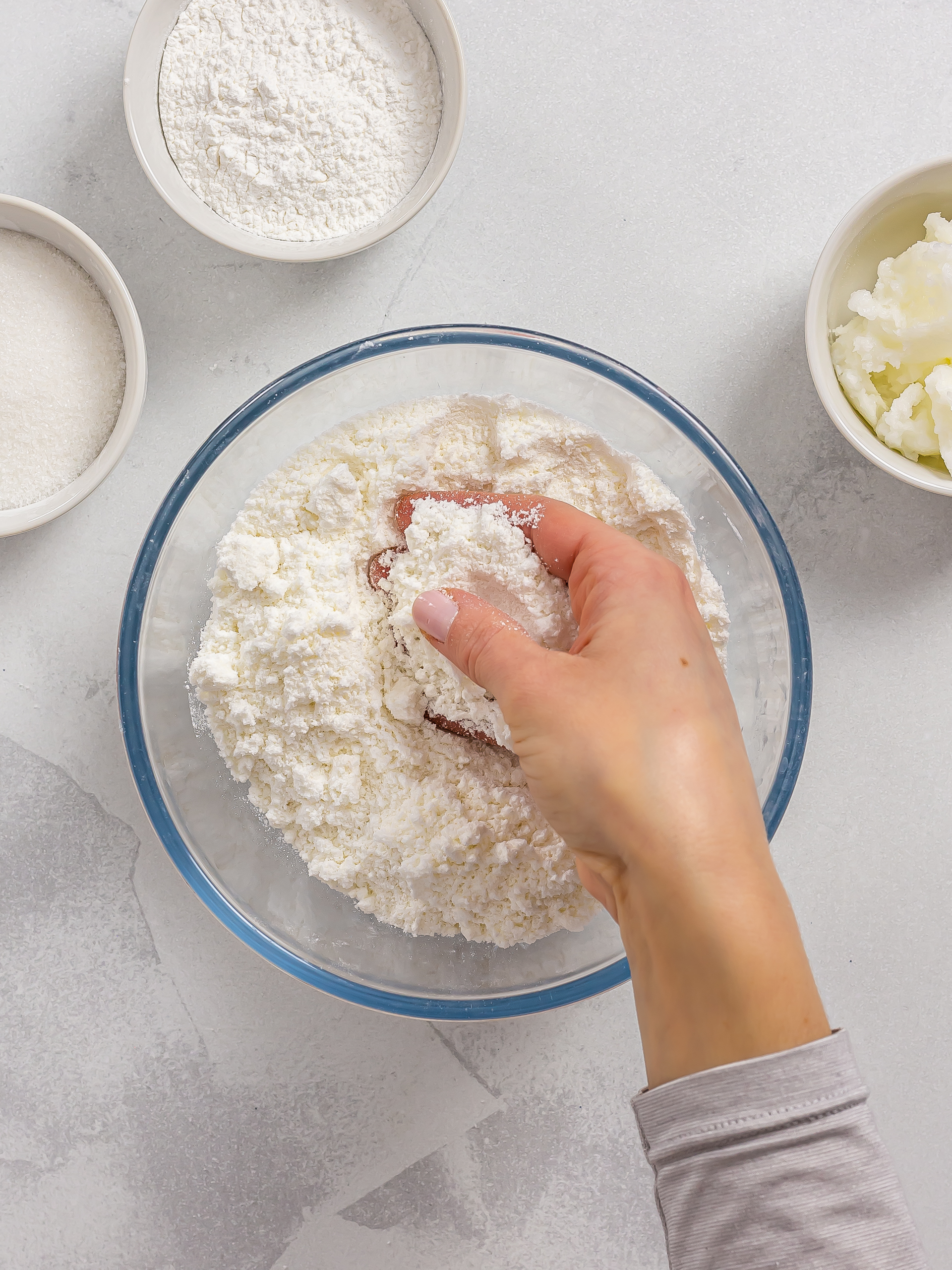
step 2
Add the plant-based milk and mix until the ingredients combine into a dough.
Then knead it on your countertop until smooth, pliable and even.
The mochi cookie dough should hold together when pressed, but it’s okay if it crumbles a little as you knead.
Now roll it into a ball, wrap it in cling film and let it rest in the fridge while you prepare the filling.
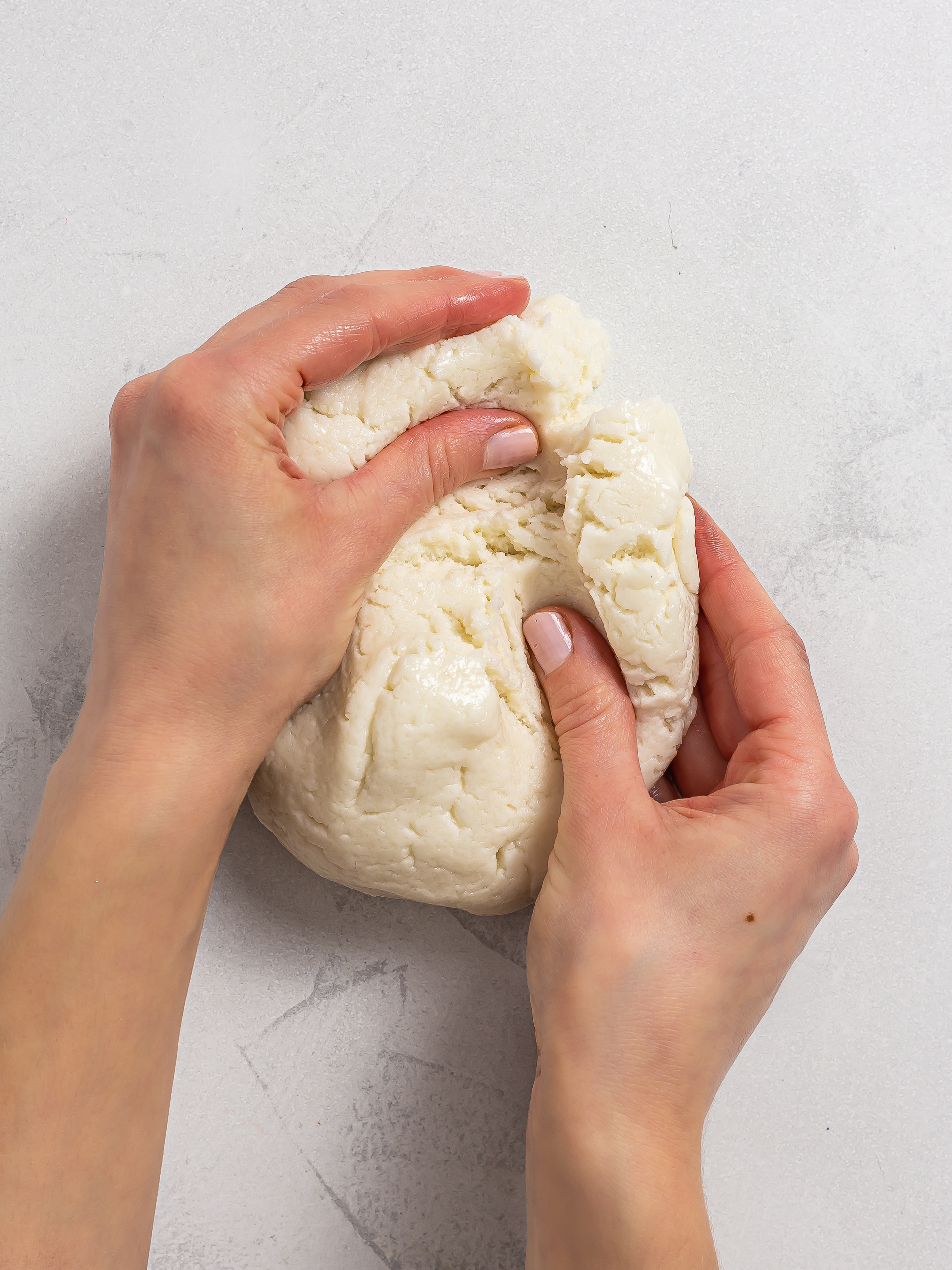
step 3
To make the matcha flavored mochi filling, we’ll show you the stovetop method; For the microwave option, read the tips below.
Mix the glutinous rice flour with icing sugar and matcha powder in a saucepan.
Then pour in the water, beating well to break up any lumps.
Again, you can use erythritol in place of sugar (1:1 ratio) for a sugar-free option: first, blitz it in a food processor until it’s powdered and looks like powdered sugar.
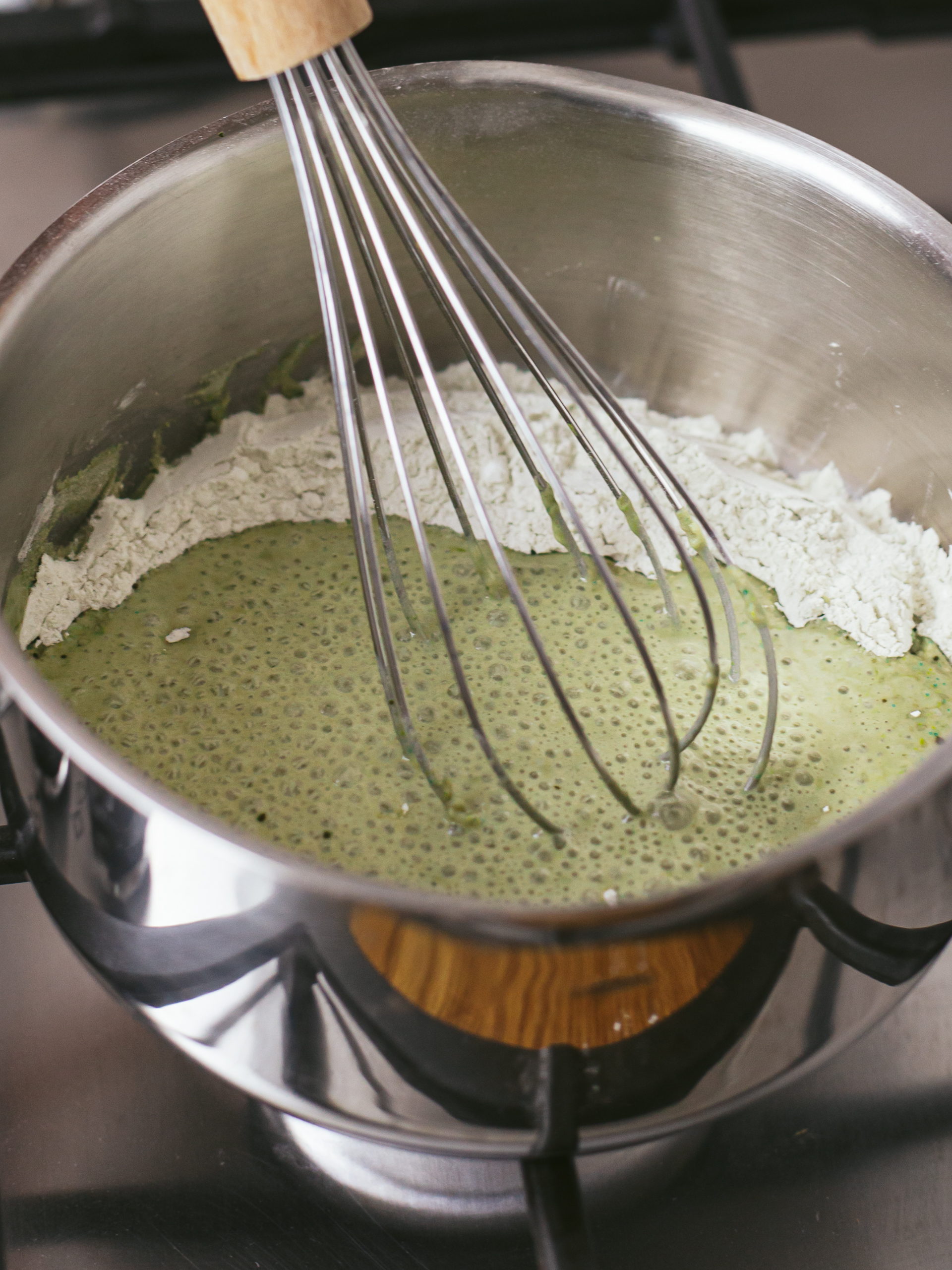
step 4
Heat the green tea mochi mixture over low heat, stirring constantly with a spoon.
Once it starts to thicken and form lumps, cook for another 4-5 minutes, stirring vigorously.
The batter will be very sticky, lumpy, and difficult to stir, but keep at it the entire time to make sure it doesn’t stick to the pot and burn.
At the end of the cooking time, the mochi batter should be smooth, sticky, and stretchy.
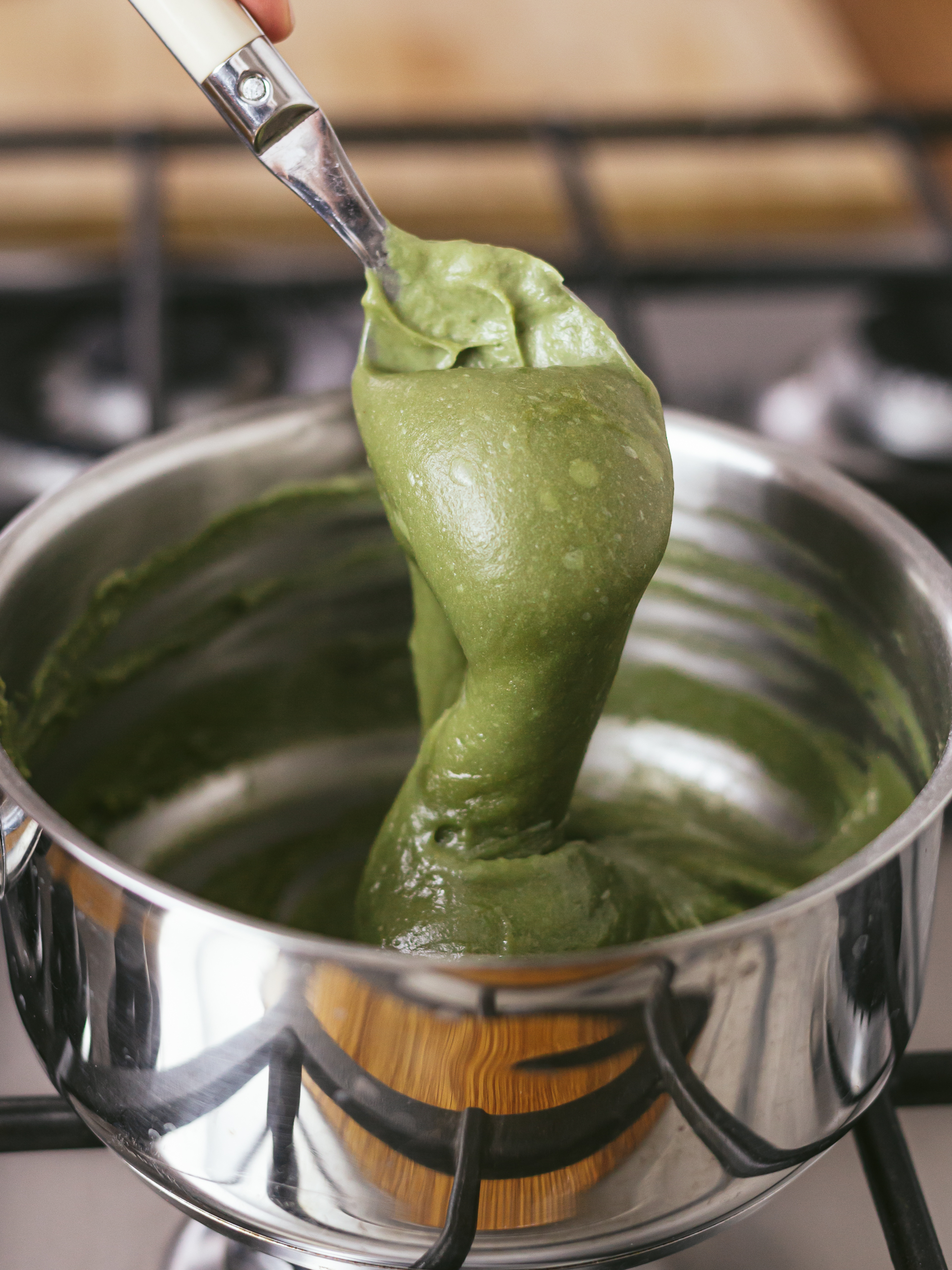
step 5
Now dust your work surface (or a sheet of parchment paper) with starch and place the hot matcha mochi batter on it, scooping it out with a spoon.
Then dust the dough with a little more starch.
The starch makes the mochi batter less sticky and easier to handle.
Dust your hands with starch and divide the mochi batter into 20g pieces, one per cookie – 12 for the standard ingredients.
Shape each piece into a mochi ball by stretching the sides of the dough and pinching the top.
Then cover the prepared matcha mochi balls with cling film to prevent them from drying out.
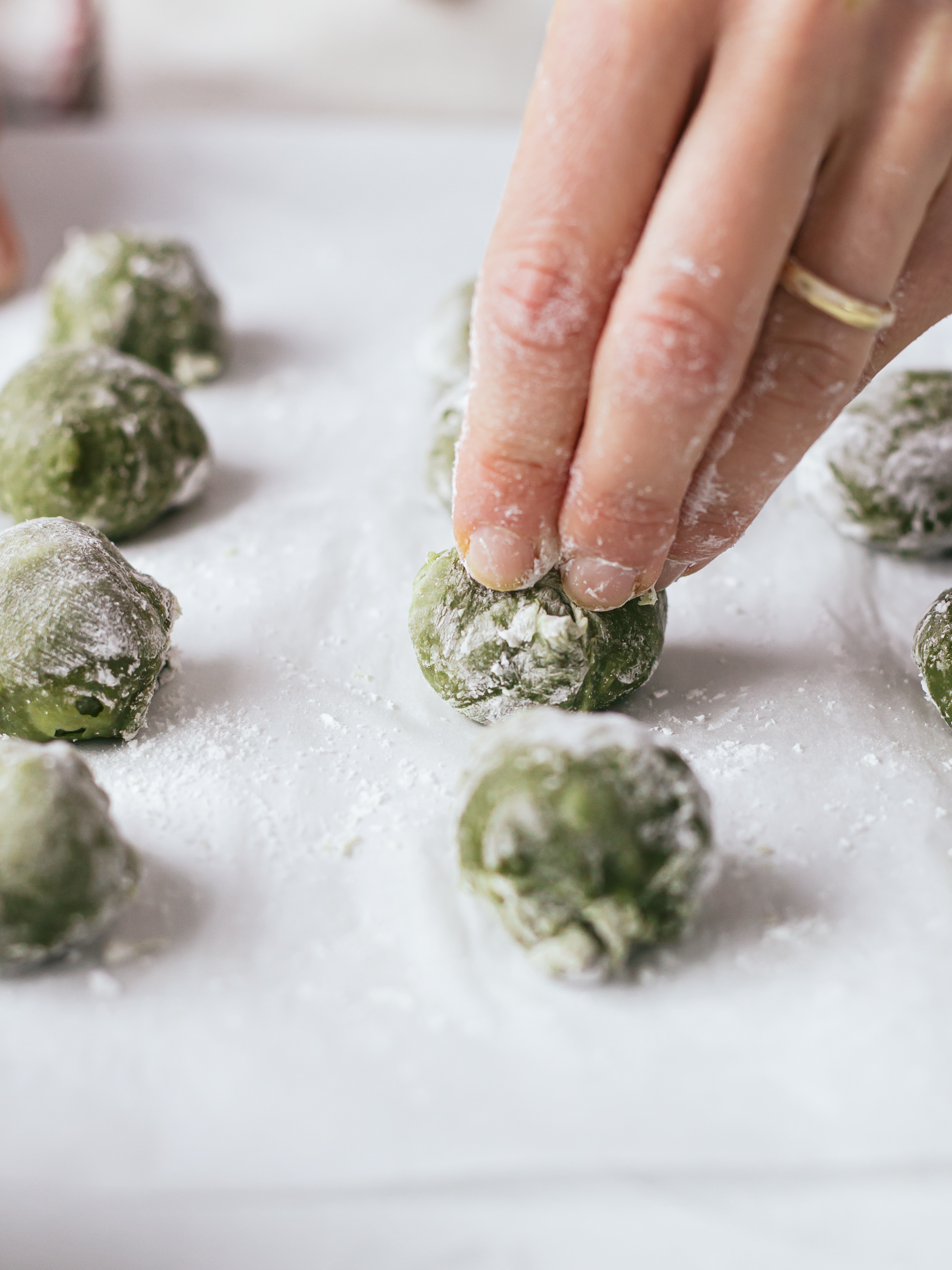
step 6
Now assemble the matcha mochi filled cookies.
Remove the mochi cookie dough from the fridge and divide into 40g pieces – 12 for the standard ingredients.
Work one piece of dough at a time, wrapping the others in cling film and storing them in the fridge.
Roll the piece of mochi cookie dough into a ball and flatten into a disc, thinning the edges (since they will overlap when you fold them over the mochi filling).
Then place a matcha mochi ball in the center of the cookie disc.
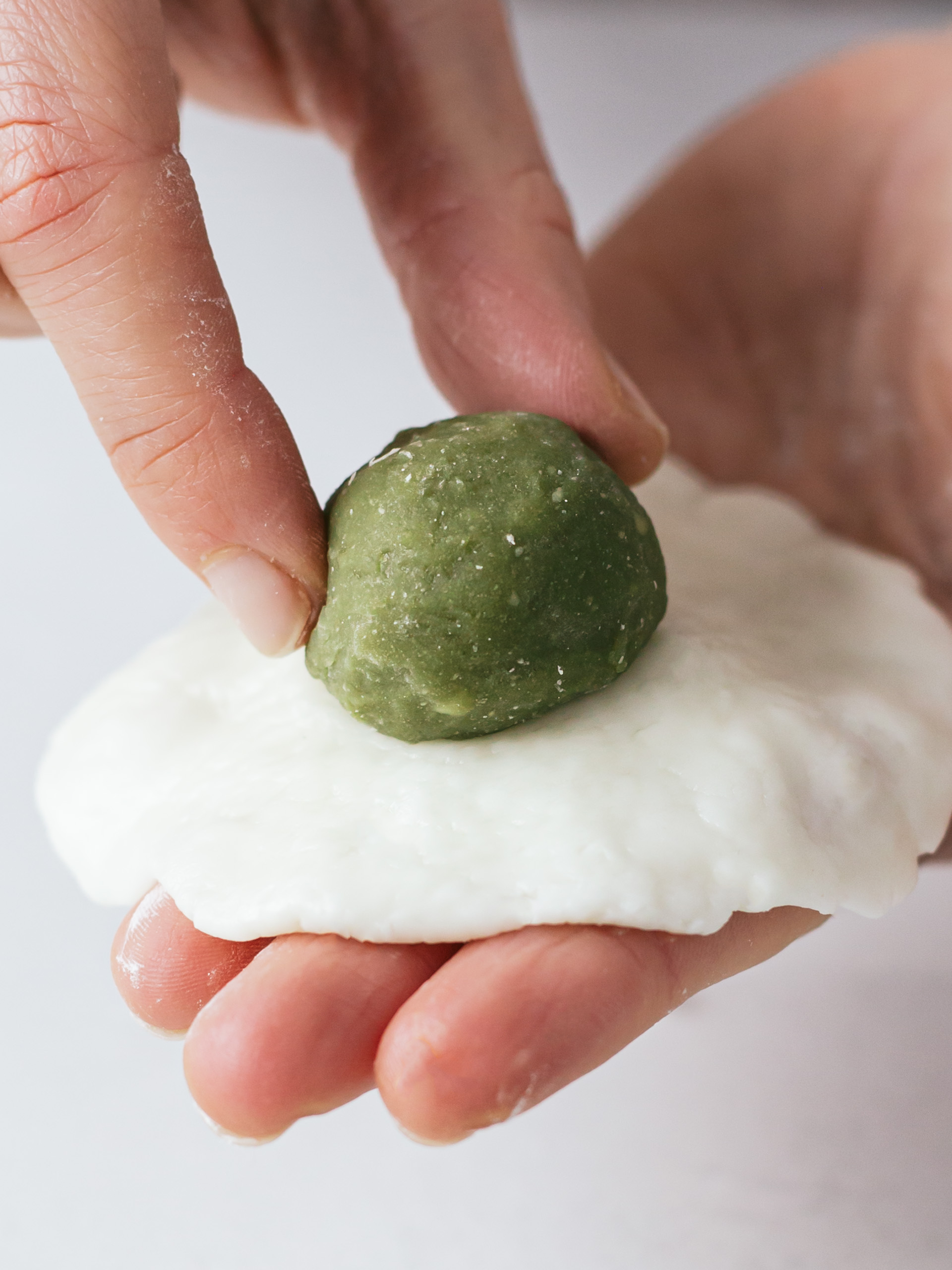
step 7
Holding the mochi cookie disc in hand, fold the edges of the dough over the mochi filling and seal on top like a dumpling.
Don’t worry if the cookie dough tears a little when you fold it; Just pinch it and smooth it out with your fingertips.
Once sealed, roll the mochi-filled cookie between your palms until you have a smooth ball with no cracks or wrinkles.
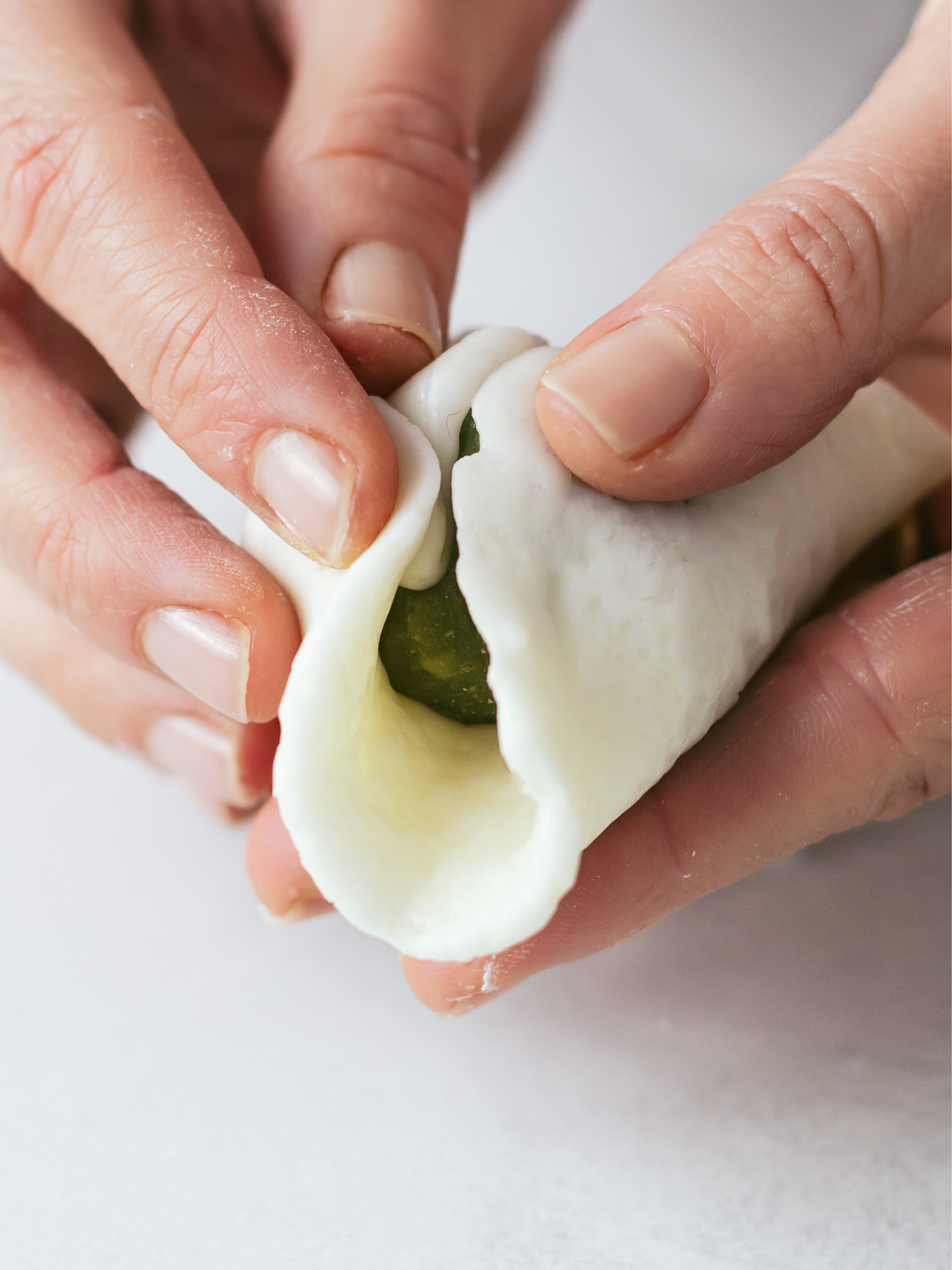
step 8
Place the prepared mochi cookies on a baking sheet lined with parchment paper and keep in the refrigerator, covered with cling film, while preheating the oven to 180°C (355°F).
This will help them keep their shape better while baking.
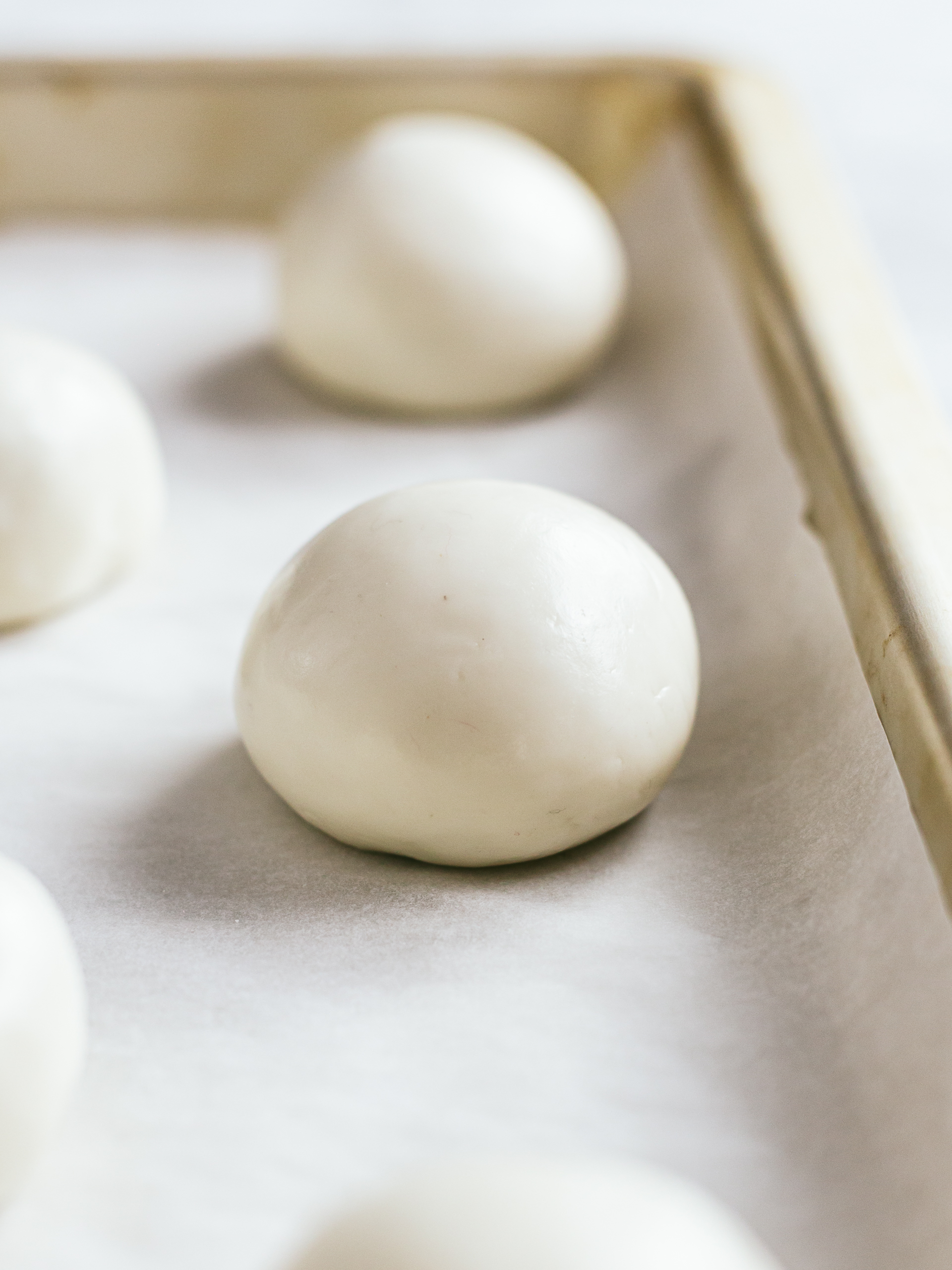
step 9
Bake the green tea mochi cookies for 15-18 minutes until golden brown and lightly crunchy.
You’ll notice the mochi filling puff up as it cooks, forming small cracks on the surface of the cookies; this is normal, don’t worry.
The cookies will disintegrate as soon as you remove them from the oven, resulting in sweet, crinkle-style mochi cookies.
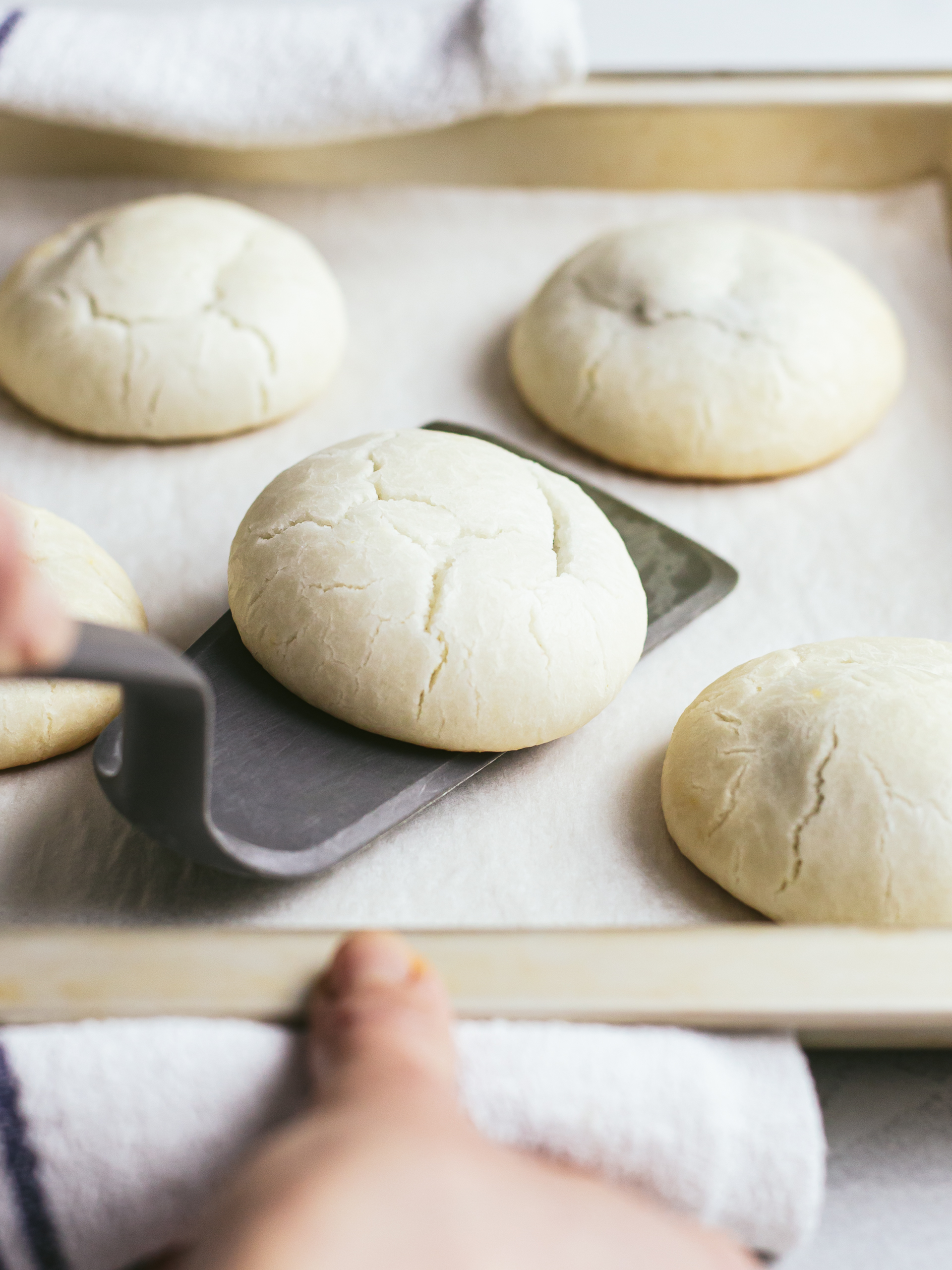
step 10
When done, transfer the mochi cookies to a wire rack to cool slightly and crisp up.
These mochi cookies are preferably still warmas the matcha mochi filling becomes super sticky.
We therefore recommend enjoying them while they are still soft and warm from the oven.
And when the cookies have cooled, you can easily reheat them in the oven, microwave or toaster.
Enjoy these gluten-free, vegan matcha mochi cookies with a classic cup of green tea – or pair them with this frothy matcha chai latte or a refreshing matcha lemonade!
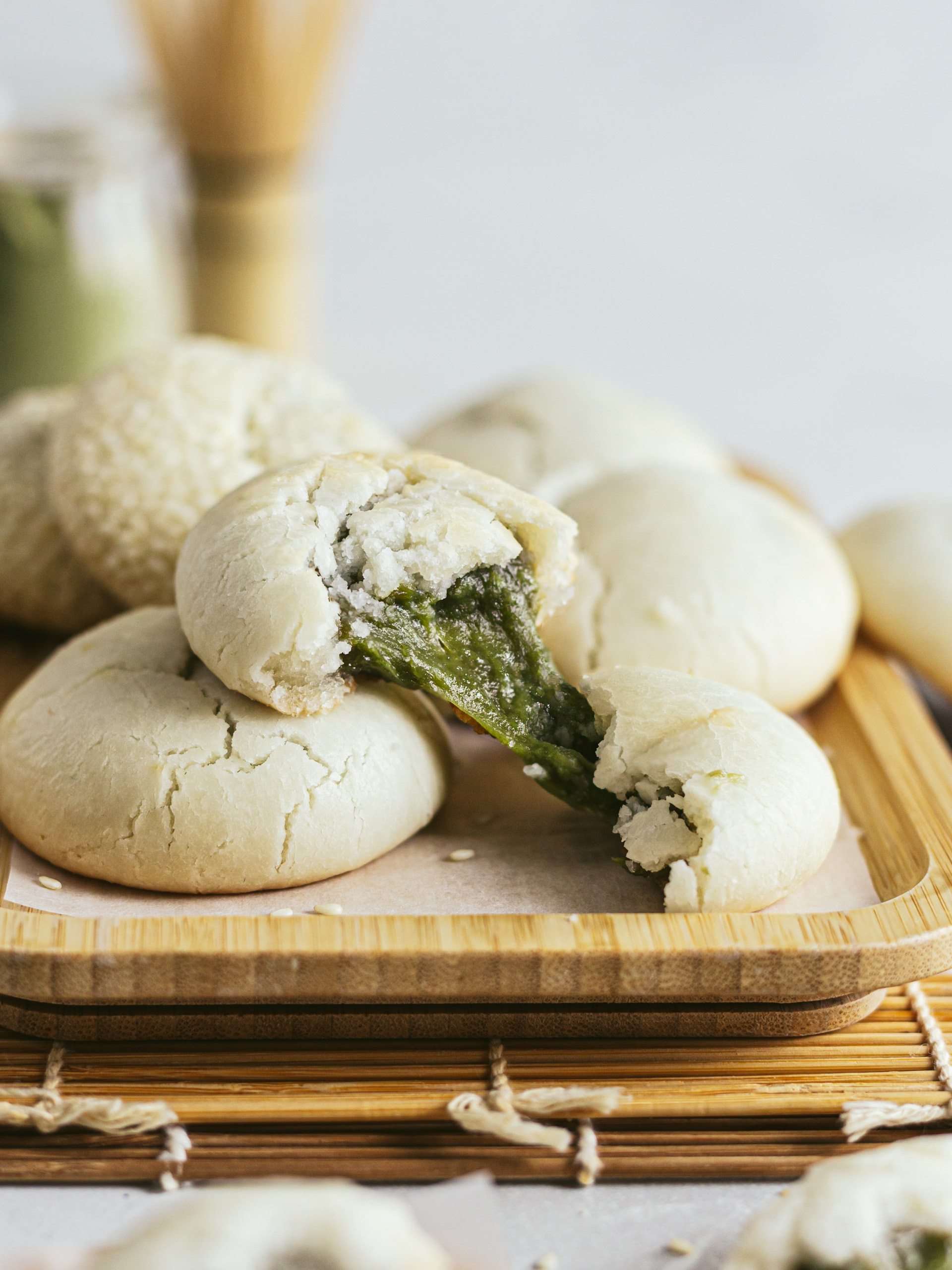
tips
-
microwave option For the matcha mochi filling:
1. In a microwave-safe bowl, mix together the glutinous rice flour, matcha, powdered sugar, and water until smooth.
2. Cover the bowl with cling film and heat the mochi batter on medium-high for one minute. Then use a wet spoon to stir the mochi mixture.
3. Repeat step 2 two or three times until you have a smooth and stretchy dough.
-
You can coat the mochi cookies with sesame seeds for a crispier and tastier cookie dough coating. To do this, roll the formed cookie balls over sesame seeds in a shallow bowl before baking.
-
Store these mochi cookies in an airtight container for three to four days. To freeze the matcha cookies, pack them in a freezer-safe container or resealable bag, leaving space in between to prevent sticking. When ready to eat, reheat the mochi cookies in the microwave, oven, or toaster oven.

